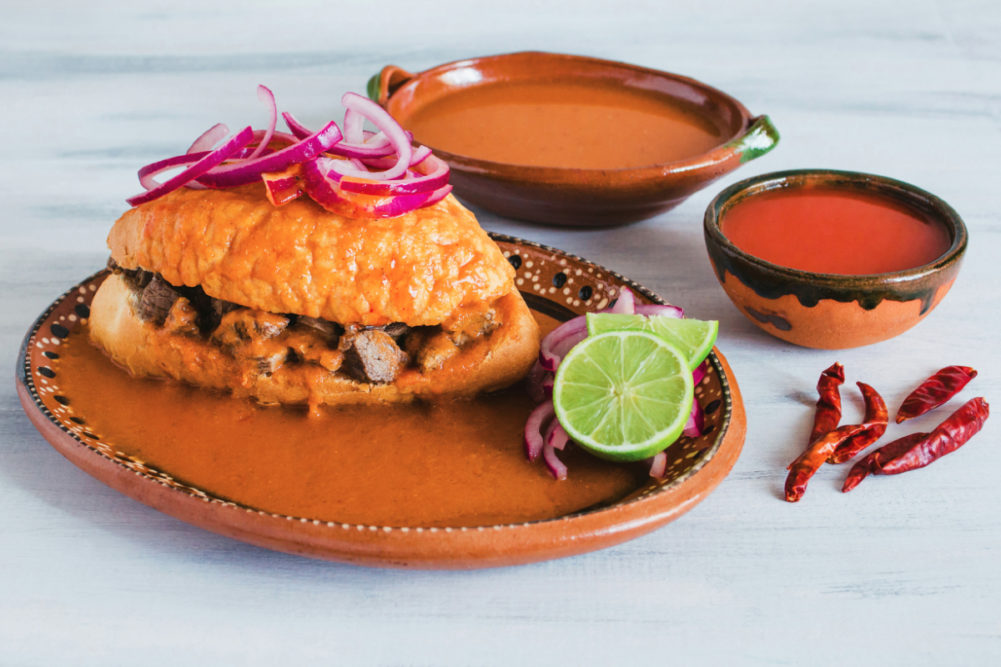Heaping plates of nachos and pitchers of draft beer may be among casualties of the coronavirus pandemic as consumers shy away from sharing appetizers and beverages at restaurants for the foreseeable future. Family-style meals and buffet spreads? Forget about it.
Operators are rethinking menu strategies in an environment radically altered by reduced socializing and spending, panelists said during a webinar hosted by the National Restaurant Association. Safety and value will be key for driving on-premise sales throughout the pandemic and resulting economic downturn.
“We are entering the golden age of single-serve,” said Nancy Kruse, president of The Kruse Co., Atlanta. “I think we’re going to have a long, slow decline of buffets and so on, but I suspect that will allow some operators to rev up the creative alternatives.”
Consumers, craving control and comfort, will be drawn to wellness cues, including seasonal, fresh, locally grown and made to order, as well as gussied-up takes on familiar favorites, Kruse said.
“We are at this moment engorging ourselves on tons and tons of comfort food, pizzas and pastas,” she said. “We want it, but I think we want it amped up a little bit… Make it a little special so it clearly outstrips what your consumers are doing for themselves at home.”
She predicted a return to the “wow factor” in restaurant dishes “because it’s the kind of thing that takes us outside of ourselves and makes us smile.” Eye-popping presentations of food and beverage have been pushed aside as a result of pared-down menus and takeout- or delivery-only operations. In the future, Instagram-ready concoctions will help lure consumers back to restaurants.
“People will be looking to control their spending, but remember that the dine-in occasion is now competing with the at-home occasion,” said Donna Hood Crecca, principal at Technomic, Inc., Chicago. “I think operators will be challenged to deliver that value from a price perspective but also start getting back to that wow factor because part of the value is ‘I can’t get this experience at home.’”
Similarly, restaurants serving expertly prepared global foods and flavors provide a special experience to consumers, particularly during a period of significantly limited international travel. Trending regional cuisines include Filipino, Indonesian and Turkish, said Lizzy Freier, senior research manager at Technomic.
“The way we’ve seen a lot of operators innovate with regard to global offerings has been with add-ons — things like sauces, condiments,” Freier said. “Add-ons are really great for operators right now because they create that revenue for incremental sales … and it’s a less expensive option than offering a completely new dish. So when it comes to something like Indian cuisine where consumers are looking for … that big, beautiful, bold flavor, using sauces and spices and condiments and herbs and things like that is kind of the way to go.”
An Italian revival is underway, Freier said, citing classic dishes and flavors incorporated in new ways on menus. Examples include cacio e pepe expanding beyond pasta and plant-based Bolognese.
A deeper exploration of Mexican cuisine is inspiring menu development, Kruse said, pointing to tajin, a chili-lime seasoning appearing in a broad range of foods and beverages. Tortas, which are sandwiches typically featuring a fluffy bun topped with refried beans, peppers, avocado and meat and cheese, are gaining momentum, too.
Creative twists on schnitzel, which Kruse dubbed “Middle Eastern soul food,” and Asian desserts also are exploding in popularity, she added.
Another trend gaining steam prior to the pandemic, plant-based meat alternatives will continue to surge on menus, while still remaining relatively niche. Some operators are betting on “better meats,” Kruse said, describing Burger King’s recent test of “reduced methane emissions” beef from cattle fed a low-carbohydrate diet that includes lemongrass.
“It’s a tiny category, but we’re going to see more activity around better meats and more sustainable meats because Americans are meat eaters, and they want us to give them an excuse to consume what they really want to consume anyway,” Kruse said.




